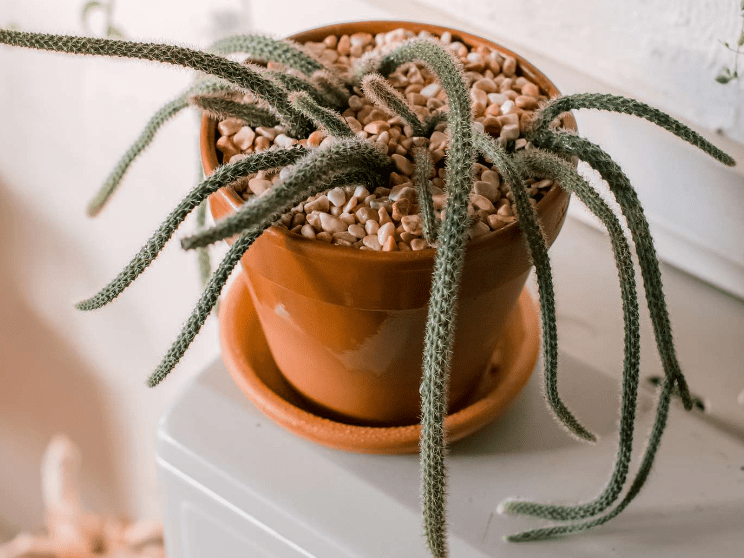
The rat tail cactus is a striking cactus that can be found in portions of Central America and southwest Mexico. The plant gets its name from its long, trailing stems, which are unusual and grow to a height of around 4 feet when mature. In the spring and early summer, the rat tail cactus blooms, and its blooms are typically violet-red, while the plant will occasionally produce flowers in eccentric hues like pink and orange. It has tubular, 2 inch broad flowers that are fairly huge. Even though it produces a lot of blooms during its late spring bloom, each one only lasts a few days at best. Rat tail cactus should be planted in the spring so that it has the entire growing season to establish itself.
Care
Light
This cactus thrives in year-round, bright, direct sunlight, which is typical of the desert. To obtain direct sunlight, put it in a window that faces south or west.

Soil
To ensure proper drainage, pick a light potting mixture. Like all cacti, the rat tail cactus thrives in a pH range of 5.0 to 6.01, which is what the majority of cactus potting mixes provide.
Water
To keep the soil just barely damp during the growing season, water frequently. Watering should be lessened in the autumn and tapered off as winter approaches. It typically doesn’t require water throughout its winter dormancy phase, but if the soil is very dry, you can water it moderately.
Temperature and Humidity
This cactus is generally quite tough, surviving in temperatures as low as 45 degrees and as high as 90 degrees. The ideal room temperature is between 60 and 70 degrees Fahrenheit at night, while regular room temps are sufficient. Make sure the cactus is never exposed to freezing temperatures because it is not frost-hardy.
The majority of homes have ideal humidity levels for rat tail cacti. Extreme dryness might result in spider mite issues, while high humidity can make the plant’s stems rot.
Fertilizer
During the spring and summer growing seasons, feed your rat tail cactus liquid fertilizers at a rate of once every two weeks, diluted to about half strength.
Pruning
This cactus just requires gentle removal of the dead flowers from the plant and the removal of any damaged or dead plant parts. However, use extreme caution when handling the plant and put on sturdy gloves with long cuffs.
Table





